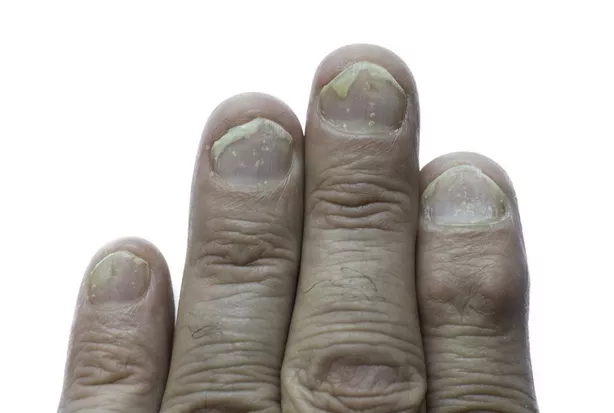Basics and epidemiology
Psoriasis (psoriasis means itch in Latin) is a chronic inflammatory dermatosis that is very common in a population. Some studies say more than 3% population suffer from this immunological disease. Psoriasis can appear to both sexes at any age. Epidemiology studies confirmed that half of these cases get psoriasis before their turn 30 years. Also, it is proved that psoriasis can be inherited in 50% if both parents have a diagnosis.
Dermatosis like psoriasis arises on the skin where epidermal cells remove much faster than usual. Their lifetime is shorter than in normal skin. From 28 days it removes in 5 days (turn-over time) so its layers and skin become much thicker on these spots. Genetic factors and environmental factors affect the appearance of this disease. Our cells called lymphocytes (CD4+ Th1 and CD8+ T lymphocytes) specifically based in the skin (this type of cells are all over the body but for psoriasis these are important) can recognize some environmental factors and make molecules called mediators (it cause inflammation). These molecules harm keratinocytes in our skin and make damage.
This disease can be associated with gluten-sensitive enteropathy, arthritis, or heart diseases. So it is important to do a systematic examination of your body.
Types of psoriasis
There are three types of psoriasis :
- Skin psoriasis (pustular and non-pustular psoriasis)
- Nail psoriasis
- Psoriatic arthritis (inflammation inside the joints)

@Trevor Knowles / Getty Images 
@BBC
These psoriatic areas on skin can also be made by mechanical or chemical cause -Koebner phenomenon. There are two more phenomena that are specific to psoriasis. Auspitz phenomenon is made by removing the squamous cells and the blood in papillae appear on the top of the skin. The second one is the Candle spot phenomenon that appears after curettage or scratching when air enters in layers under the squamous cells and that looks like candle wax.
The most common dermatosis appears on elbows, knees, scalp, lumbosacral part of the back, glans of the penis, and interdigital space of arms and feet. These changes on the skin can be red or grey, clearly limited with squamous on top called plaque. Psoriasis also can appear on nails so they become yellow, thicker, and irregular shaped. In the worst episode leads to onycholysis – separation of the nail from the nail bed. Psoriatic arthritis is inflammation of small joints on the hands and feet. These joints are painful, swollen, and stiff.
These psoriatic changes can be limited in one area but also can appear to other parts of the body so it is very important to take it under control.
Subtypes of skin psoriasis
Non-pustular psoriasis :
A) Psoriasis Vulgaris
- Chronique plaqe psoriasis (small papillae make make bigger irregular plaque with squamous cells)
- Inverse psoriasis ( on intertriginous places on skin like armpits, groin or under breast),
- Gutate psoriasis ( small papile become bigger plaque 1-2cm in diameter with or without squamous cells; most common in small children after respiratory infection caused by bacter streptoccocus)
B) Psoriasis of the hands and feets
C) Erythrodermic psoriasis (it can cover the entire body)
Pustular psoriasis :
A) Psoriasis pustulosa palmo-plantaris (pustules appears on palms and soles)
B) Acrodermatitis continua suppurativa (it targets nails and fingertips)
C) Psoriasis pustulosa generalisata (pustules all over the body and it can lead to very difficult state of patient)
At a young age, the most common is gutate psoriasis. It can appear after a respiratory infection caused by group A Streptococcus bacteria.
What trigger psoriasis
If somebody has a genetic predisposition for psoriasis, the disease can be triggered by some things like stress, alcohol, an infection caused by streptococcus bacteria, and some drugs like beta-blockers, antimalarial medications, angiotensin-converting enzyme inhibitors.
Diagnosis and treatment
Dermatologists give diagnosis and treatment. They use:
- Anamnesis ( take informations from patient about disease),
- Clinical picture
- Presence of psoriasis phenomenons
- Biopsy of tissue ( to reconsider other diagnosis like mycosis caused by fungal infection)
- Blood tests to measure uric acid (usually uric acid is highten)
Treatment can be local therapy, phototherapy, or systemic therapy.
Local therapy can be corticosteroids, anthralin, salicylic acid, retinoids, or vitamin D analog.
In phototherapy, dermatologists use UVB radiation or PUVA (a drug called Psoralen and UVA radiation together).
And the last therapy can be systemic treatment most commonly with retinoids (vitamin A derivative), methotrexate or cyclosporine.
Also, today is a very popular new type of treatment called biologic therapy for psoriasis. It contains antibodies and some synthesized proteins that target and block some cells to do harm to the skin.
How to improve your health and minimise disease symptoms
It’s very important how a person sees and accepts this condition of their own body. Lots of stuff you can improve with medicine but this disease is not curable, well not yet. But there are a lot of things how you can treat your body and become better.
First of all, we all live in a world full of stress and that is the main reason why a lot of people have a weak or intolerant immune system. That’s why exercises, walking, meditation are some of the ideas you can practice. Because all of it reduces a lot of bad feelings or stress as the main cause of disease.
Another good idea is to drink less alcohol, eat healthier food like vegetables and fruits, and less meat. Everything that acidifies your organism is not good for your health. So eating fast food, dring soda, eating a lot of industrial sugar is a bad choice if you can choose. Some examples are proof that using probiotics like medications or yogurt can help your psoriasis by helping your good bacteria in the intestines and skin. So cleaning your liver and intestines with healthy food and drinks is always a good remedy for every disease.
Colloidal silver in water is also very helpful for the immune system. And this magic liquid is one of the best options for protecting and healing yourself. It destroys almost every microorganism and also detoxifies your body.
Tips for healthy skin
Drinking a lot of tea specially made from these plants can be very helpful:
Detoxification: dandelion, common nettle, green tea (instead of coffee)
Relaxing: lemon balm, hops, valerian
Anti-inflammatory: Calendula, chamomile, and common sage
It is important to moisturize skin so never let your skin become dry. Use some sensitive creams, lotions, and baths. Also, products for the skin that contain hyaluronic acid, panthenol, or urea are really useful. But there are also lotions that contain substances to renew skin like probiotics.
One thing is very helpful for skin and it has anti-inflammatory, detoxified, and moisturizing effects- plant Immortelle. So tonic made from this plant is very good for all types of skin but also for all dermatosis.
A lot of people have psoriasis. Every each of them has their own story and every person is different. People need to understand their bodies and the disease they have. Only then improvements can come. Nothing is impossible. Be consistent and determined. This disease is not you and it will not determine who will you become. Stay positive and be brave.
I hope this post will be helpful for some of you and if you like it subscribe and follow us for more posts.
Thank you, your Smart Owl.



